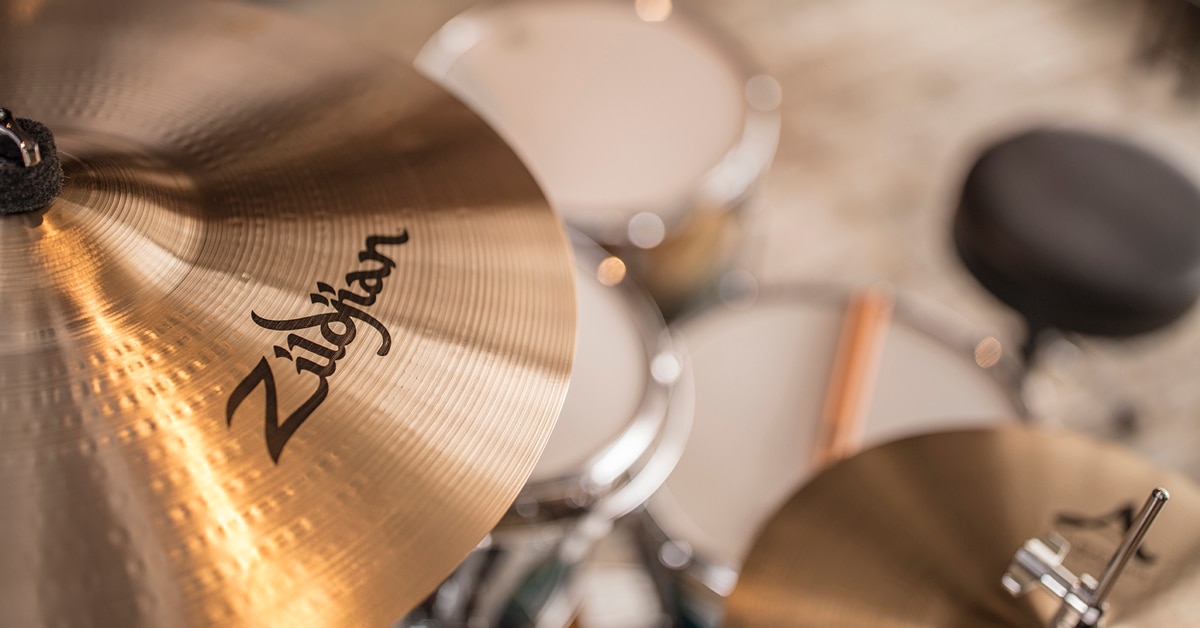This guide will help you find the right drum sets and drum hardware. Whether the grooves you hold down are heavy metal, R&B, country, reggae, jazz, pop, blues, or good old rock ‘n’ roll, we’ve got the gear and know-how to hook you up with the right stuff.
From affordable starter drum sets to sophisticated, arena-worthy acoustic and electronic drum kits, we’ll help you choose the right combination of gear that matches your budget, music, and percussion skills. You’ll learn about all the elements that go into drum and cymbal making, and what to consider when shopping for drums. You’ll also learn about crucial accessories, drum hardware, plus the learning and practice tools to make you a better drummer. If you run into any unfamiliar terms along the way, check out the glossary at the end of this guide.
Table of Contents
Parts of the Drum Set
How to Choose a Drum Set
Drum Woods and Construction
Drum Hardware
Bass Drum Pedals
Drum Thrones
Drum and Cymbal Stands and Racks
Cymbals
Snare Drums
Electronic Drums
Drum Heads
Drum Sticks and Brushes
Drum Accessories and Practice Tools
Drum Set Instruction and Learning Tools
Summing Up
Drum Set Glossary
Parts of the Drum Set
With the huge variety of drum sets available, how do you decide which drum kit is right for you? Before we take a look at how to choose your drum set, we'll introduce the components that go into it. These include: the snare drum, the bass drum, one or more mounted toms, and a floor tom. The two other essential components that complete the contemporary drum set are the cymbals and hardware, both of which we will address shortly. First we'll examine the various drum set configurations that are available.
If you're a beginner or hobbyist who wants to play in a band or jam with your friends, a 4-piece drum set consisting of a snare drum, bass drum, single mounted tom, and floor tom provides you with all the basic sounds. Ringo Starr made this configuration famous with The Beatles. A 4-piece set takes up a minimum of space, is easily portable, and has a sound well suited to jazz, blues, and rock styles.
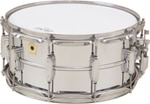 |
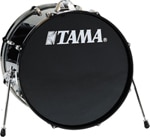 |
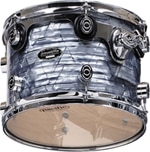 |
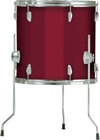 |
|
Snare Drum |
Bass Drum |
Mounted Tom |
Floor Tom |
How to Choose a Drum Set
If surrounding yourself with drums sounds like fun, then consider a five-piece, six-piece, or larger set, which add additional toms for a wider tonal range. These larger kits are well suited for heavy rock, fusion, contemporary, and metal styles.
Many drum sets come in two different configurations, Standard or Fusion. The drum diameters distinguish each configuration. Fusion drum sets typically feature 10" and 12" mounted toms, a 14" floor tom (suspended or standing) and usually a 22" bass drum. Standard-sized kits feature 12" and 13" mounted toms, a 16" floor tom, and 22" bass drum. The benefit of the smaller diameters of the Fusion set is their punchy tone and articulate sound. The benefit of the Standard size set is that the larger toms produce more volume and bigger tone. Choosing the best set is a subjective process with benefits to each configuration.
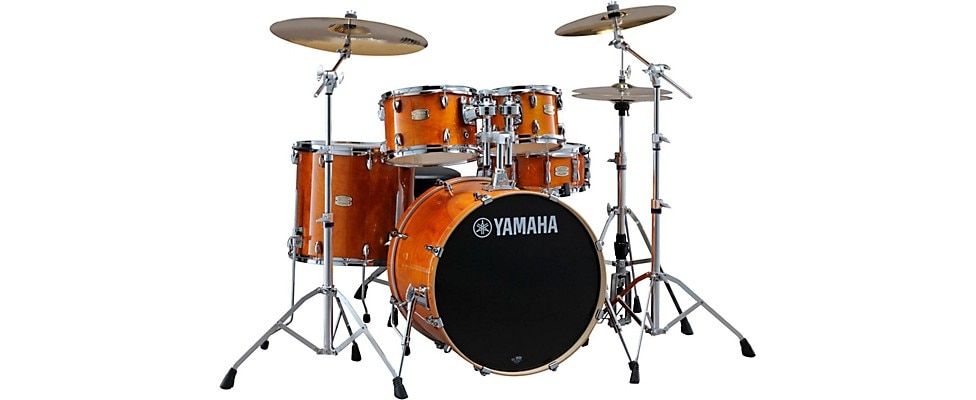
A complete drum set will usually contain all the hardware you need. If you already have the hardware, buying a shell pack can save you money. A shell pack consists of the drums themselves with no additional hardware except the rims and tom mounts. If you already have a drum set but want to expand it, an add-on pack can be a good way to go since their cost is often less than buying the add-on drums singly.
If you’re shopping for a beginning drummer, a beginner drum set can make a lot of sense. These affordable drum kits usually include all the drums, cymbals, stands, and other hardware needed to start playing right out of the box.
When shopping for children, a junior drum set makes an affordable purchase. These specially scaled drum kits are sized for kids and include the entire outfit to launch a budding drummer’s career. Unlike the toy-store variety, these junior drum kits are built solidly and offer the sound and feel of full-sized drums.
While there are drum sets that work for a variety of styles, in general it's a good idea to choose a drum set that fits the style of music you play. Is Slipknot's Joey Jordison your drumming idol, or is Steve Gadd more your style? A rule of thumb is that kits with fewer and smaller drums are a good fit for jazz, traditional blues, and other primarily acoustic forms of music, while drum sets with larger drums are better for rock, metal, and other more amplified styles.
Drum Woods and Construction
Another element that you should consider is the kind of wood used in the making of your drums. Many kinds of woods are used for drum building, and all have unique sound qualities.
- Maple is the most popular wood used for drum making, with a warm, balanced tone.
- Falkata is sometimes substituted for maple, as it costs less yet shares maple's sound qualities and takes finishes well.
- Birch is very dense and tough, with a harder and brighter sound than maple or mahogany. Its loud, bright tone makes birch excellent for recording, as it easily cuts through the mix with its clarity. Birch features enhanced highs and lows with a reduced midrange.
- Mahogany has an enhanced low end and midrange with reduced highs. The sound is slightly warmer than maple and is said to have a "vintage" character.
- Poplar is a low-cost alternative to maple or birch with a similar, bright sound.
- Basswood is plentiful and makes a good, less expensive alternative to maple or birch. Basswood has a nice grain that takes lacquer finishes beautifully.
- Lauan wood is often referred to as "select hardwood," and can be thought of as a budget version of birch.
- Oak has a similar sound to maple, with a more porous composition and a powerful, bright sound.
Drum shells are made of several plies, or layers of wood. In general, drums with more plies have a brighter sound and higher fundamental note. Drums made with fewer plies usually are fatter and warmer with a lower fundamental note.
The angle at which a drum shell's bearing edge is cut makes a difference in the sound quality. A sharper bearing edge angle gives a brighter sound with more cut, while a more rounded bearing edge gives a softer, mellower sound.
Drums come with a variety of finishes. Covered finishes are an inexpensive treatment consisting of vinyl wraps with a great variety of patterns and looks to choose from. Covered finishes provide great durability and resist scratches and nicks better than a natural finish. Transparent lacquer finishes enhance the woodgrain for a beautiful natural look.
Drum Hardware
Drums alone do not a drum set make—hardware is another crucial component that makes up a complete kit. Unless you are purchasing a shell pack, a drum set will come with the hardware necessary to assemble and play it. Essential drum hardware includes the bass drum pedal, snare stand, hi-hat stand, and one or more cymbal stands. Keep in mind that though a complete drum set will include enough hardware to get you playing, the hardware that's included varies from set to set.
A money-saving hardware pack is a great solution for budget-strapped drummers. These are bundled collections of stands, pedals, and thrones that save you money over the cost of separately purchased drum hardware.
We’ll next look at the most important drum set hardware components.
Bass Drum Pedals
Nowadays, there is an astounding selection of bass drum pedals to choose from. They range from simple, inexpensive single-pedal models to the sophisticated double pedals favored by rock, metal, and fusion drummers. You’ll find pedals with double beaters for use with single bass drums, double pedals with single beaters intended for dual bass drum kits, and dozens of other configurations. Reading reviews by pro drummers as well as the many customer-written reviews on the Musician’s Friend website will help you hone in on the pedal that best matches your budget and music.
Drum Thrones
Most drum sets do not include a drum throne. It's not advisable to use anything other than a drum throne to sit on, as thrones allow height adjustment, are compact, disassemble for easy transport, and include padding to make for a comfortable playing experience. A well designed drum stool can help you play better thanks to its superior ergonomics.
Drum and Cymbal Stands and Racks
There is a stand to mount virtually any drum, percussion instrument, or cymbal known to man. Choosing the best drum, percussion, or cymbal stand comes down to your drum kit’s configuration, components and your budget.
Some modern drum sets offer an alternative to mounting drums and cymbals on stands, employing a frame-like structure called a drum rack. Racks can also be purchased separately and offer a compact way to mount multiple toms and cymbals using the least floor space. Musician’s Friend sells hundreds of different drum and cymbal stands and racks to match up with virtually any drum kit setup and budget.
Cymbals
Cymbals are an essential component of any drum set. Most drum sets come without cymbals, so you'll want to find cymbals that fit the music you like to play and the set that you've chosen. Different kinds of cymbals are made to fill various roles within the drum set. The main types of cymbals are ride cymbals, crash cymbals, and hi-hat cymbals. Splash and China cymbals have also become very popular in the last few decades. A wide variety of effects cymbals are available to provide drummers with a multitude of sounds, colors, and shapes to choose from.
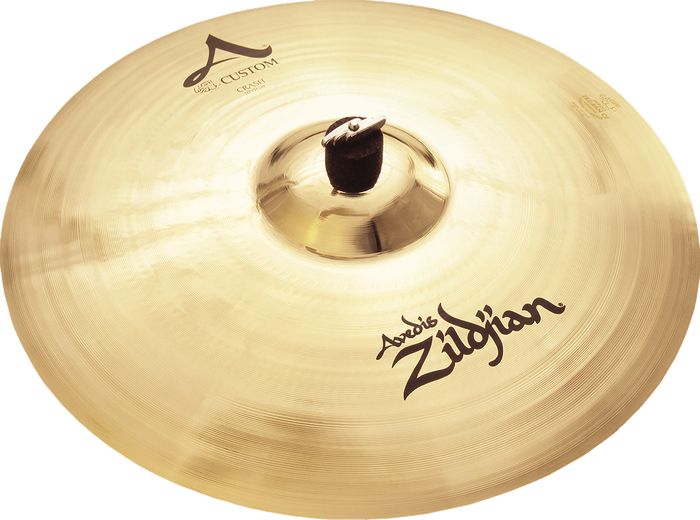
Cast cymbals are made by pouring raw, molten metals. The castings are then heated, rolled, shaped, hammered, and lathed. This lengthy process results in cymbals with a full, complex sound that many feel improves with age. Each cast cymbal has a distinct sonic character that is unique.
Sheet cymbals are cut from large sheets of metal of uniform thickness and composition. Sheet cymbals have a very uniform sound from cymbal to cymbal within the same model, and are generally less expensive than cast cymbals.
Cymbal sounds are a very individual preference. Many jazz players favor darker, more complex cymbal sounds, while rock drummers generally lean toward a brighter, louder sound that cuts through the mix. While a few traditional cymbal-manufacturing giants continue to dominate the market, there's an expanding universe of options to choose from.
Learn more with our Cymbals Buying Guide.
Snare Drums
The snare drum's crisp, snappy voice cuts through any mix, keeping the groove moving, adding accents, and interacting with the soloists. This drum's distinctive sound comes from the metal wires, or snares, that are held in place against the thin bottom head of the drum with a device called a strainer that's mounted on the shell. The snares can be released for a high tom or timbale-like sound.
Snare drums are traditionally made of either metal or wood. Metal snare drums, made of steel, brass, aluminum, and other alloys, offer an exceptionally bright, cutting tone. Many drummers prefer the warmer, mellower sound that a wood snare offers. Snare drums are generally 14" in diameter and range in depth from 3-1/2" to 8". That said, today there are a huge number of specialty snare drum sizes and materials available.
Many drummers buy additional snare drums to use in special situations. Piccolo, soprano, and sopranino snare drums are specialty snares that are progressively smaller-sized and higher-pitched than a standard snare drum. The popcorn snare is a 6" x 10" specialty snare drum with popping, high-pitched tone. These specialty snare drums are used by drummers who play modern electronica styles such as drum 'n’ bass, trance, and jungle that require a higher-pitched snare sound.
Electronic Drums
An electronic drum set (occasionally referred to as electric drums) has some unique advantages. You can plug in headphones for nearly silent practice. In the recording studio, you can run a signal directly from the electronic drum module to the mixing board, making it easier and faster to get a good drum sound.
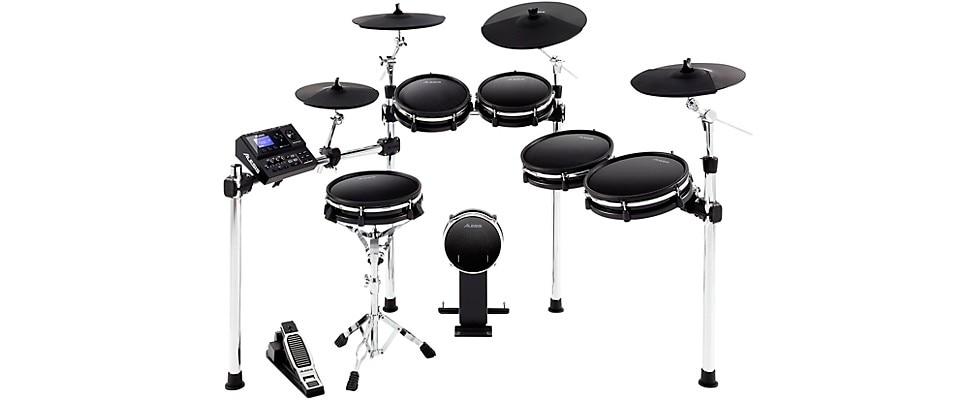
Another advantage with an electronic drum set is the ability to call up hundreds of different drum and percussion sounds. Electronic kits use rubber or mesh pads to trigger a variety of sounds contained in a digital drum module. Acoustic drummers who prefer an acoustic set but want to be able to produce alternative sounds may do so with the use of drum triggers. These small sensors attach to your drum heads and trigger sounds from an external electronic drum module.
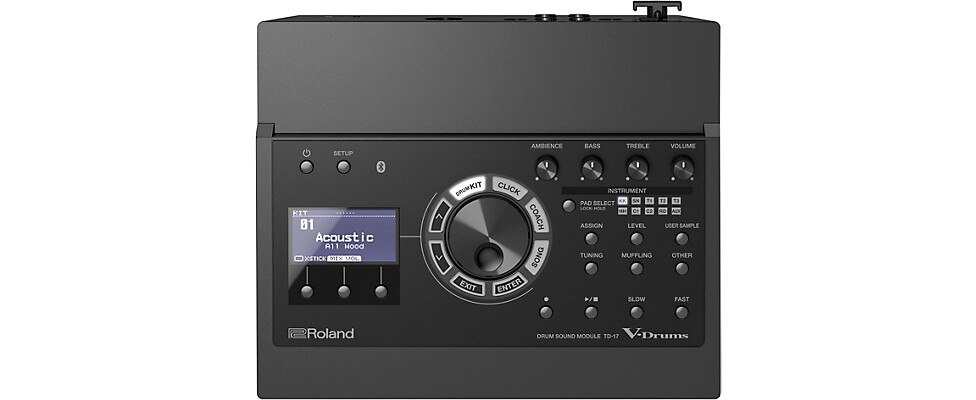
Keep in mind that an electronic drum set requires connection to a sound system to produce an audible sound unless you're using headphones exclusively. You will also need an electronic drum kit monitor speaker and amplifier so that you can hear yourself onstage if you perform with a band.
Learn more with our Electronic Drums Buying Guide.
Drum Heads
The kind of drum heads you use can make a dramatic difference in the sound of your kit. Heads come in many varieties—coated, clear, single ply, and double ply. The heads used for the top of the drum, the side you play, are called batter heads, while resonant heads are used on the bottom side of the drum adding resonance and sustain. Some drums intended for maximum attack and brightness only have a batter head.
Dig deeper with How to Choose Drum Heads.
The overwhelming majority of drum heads these days are made of a thin plastic called Mylar. Mylar heads today come in various colors and are available with or without a sprayed-on white coating. Coated drum heads, for decades the main type available, have a bit less ring and projection and are still favored by many jazz players for their more subtle sound. These coated heads have a warmer sound than clear heads and are often used for studio work.
Drum heads come in various degrees of thickness, in single or double plies, with each type having a markedly different sound. Thick heads generally sound best tuned to a higher fundamental tuning range, and have a quicker decay with more pronounced attack than thinner heads. They are also more durable and dent-resistant. Two-ply heads have a more controlled sound, and sometimes come with material sandwiched between them to focus and dampen the tone, as with Remo Pinstripe and Evans Hydraulic heads. Pinstripe heads have an epoxy ring sealed between the plies, which limits overtones and gives a "wet" sound. Evans Hydraulics have oil between the plies for an extremely dampened sound with a very dry tone.
Many jazz players prefer the livelier sound and quick response of thinner heads, while rock players generally like the fatter sound of two-ply heads. However, there are no strict guidelines for what kind of head to use—drummers have very personal responses to the way different heads sound, so let your ears be your guide.
Snare heads are of two types. The bottom or snare side head is very thin for sensitive response to the metal snare wires that are held across it. For the top of the snare drum, most drummers prefer to use a coated head, as it serves to slightly attenuate the very lively response of the snare drum. The fine grain of the coating is needed if you play brushes.
Drummers use various ways to dampen excessive ring and resonance in their drum kits. These include using a felt strip on the bass drum batter head, cutting a hole in the front bass drum head, placing a pillow against the inside of the batter head, or using a specialized muffling bass drum head. Bass drum heads are available that provide many degrees of muffling. There are also numerous drum sound-dampening rings, patches and pads available to tame excessive resonance. Many are sized to fit specific drums and designed to tailor the dampening effect to your specific needs.
Learn more about controlling drum response with these tech tips: Muffling Your Drums Part 1 and Part 2.
Drum Sticks and Brushes
Drum sticks come in as many sizes and shades as the players who use them, and drummers often use different sticks for different styles of music. In general, heavier sticks such as 2Bs are favored for rock and R&B styles where more volume is needed. Lighter sticks like 7As tend to be favored for jazz, folk, acoustic, and other styles that require less volume. Experimentation is the key here, so try out a lot of different sticks to find the types that are right for you. Many drummers like using heavier sticks for practicing than for gigging in order to develop strength and stamina.
The numbers used in drum stick manufacturing, such as 5A, 5B, 2B, 3S, and 7A, come from the earliest days of drum stick manufacturing, when a number and letter were assigned based on the stick's size and application. The numerical part signifies the circumference of the stick. In general, the lower the number, the larger the circumference and the higher the number, the smaller the circumference. For example, a 7A stick is smaller in circumference than a 5A which in turn is narrower than the 2B. An exception is the 3S, which has a larger circumference than a 2B despite the number.
As for the letter designations, "S" stands for "street," as these large sticks were designed for street applications such as marching band. "B" sticks were intended for "band" applications like symphonic and brass bands. 2Bs continue to be recommended by drum teachers as ideal starter sticks. "A" refers to orchestral drum sticks, which are smaller in circumference than "B" series sticks and continue to be very popular with rock and jazz players. Why does "A" stand for orchestral? Reportedly this convention reflects the preference of William F. Ludwig of the Ludwig drum company, who simply felt it printed better.
Stick tips come in a choice of wood or nylon. Wood tips have a softer, warmer sound, while nylon tips offer increased durability and brilliant, focused cymbal sound.
Brushes are commonly used in place of sticks for playing ballads, quieter jazz tunes, and other acoustic music styles. Brushes come in a variety of sizes, shapes, and materials. Configurations include telescoping and non-telescoping; metal bristles, plastic bristles, loop ends, ball ends; and handles of wood, rubber, aluminum, etc.
Lately a profusion of bundled sticks or "rods" have become available, marketed under a variety of names. They all consist of rods or dowels of various thicknesses bundled together for a sound that's somewhere between sticks and brushes. Bundled sticks are ideal for low-volume playing and practice.
Dig deeper with our Drum Stick Buying Guide.
Drum Accessories and Practice Tools
Apart from obvious things like drum sticks and mallets, there are dozens of other products designed to transport, adjust, maintain, repair, and customize your drum kit as well as tools to help you become a better drummer. At Musician’s Friend we offer an unrivaled selection of drum accessories including drum care and cleaning tools, drum keys and tuning tools, drum cases, covers, and gig bags; and drum replacement parts.
Getting to be a great drummer takes work and practice. Since drum practice can be a recipe for disaster when it comes to your happy relations with family, neighbors, or roommates, nearly silent practice pads are a must. There’s a great range of practice pads and drum mutes available that are designed to simulate or fit on various drums and cymbals.
Drum Set Instruction and Learning Tools
While having a professional drum and percussion teacher is the ideal way to learn how to play the drums, not all of us have the access or funds for that. Many of the greatest drummers are self-taught. There’s no substitute for enthusiasm, persistence, and plenty of practice. Those qualities coupled with great learning tools can transform you from an absolute beginner who doesn’t know the difference between a paradiddle and flam to a skilled beatmaster who can hold down any groove the music demands. At Musician’s Friend you’ll find a huge selection of drumming courses, lessons, demonstration CDs and DVDs, and how to’s. Many of these drum instruction tutorials include access to great online resources and insights from some of the biggest names in drumming and percussion. The most comprehensive drum courses step you through the learning process from the most basic beats to intermediate drumming techniques, to the skills needed by weekend warriors and pro drummers.
Summing Up
By now you should have a pretty good idea of the important things to look for when considering a new acoustic or electronic drum set. Keep in mind that the thousands of customer-written product reviews from fellow musicians you’ll find on Musician's Friend’s website can be invaluable in helping whittle down the possibilities.
We want you to be pleased with your drum kit, cymbal, or drum accessory purchase, and offer a generous return policy so you can order with confidence.
After reading this guide, if you’re still not sure which gear is right for you, we invite you call to one of our friendly and knowledgeable Gear Heads at (877) 880-5907.
Drum Set Glossary
Bass drum: Large drum played with a footpedal. Sometimes referred to as the "kick drum" or "kick." The bass drum is used to anchor the bottom of the music mix and interacts with the bass to build the music's foundation.
Bass drum pedal: The pedal that you step on to play the bass drum. Uses a lever and tensioning springs.
Bass drum beater: The metal shaft that fits into the bass drum pedal, with a head that is made of felt, wood, or other material.
Bass pedal spring: The spring that pulls the pedal back after the pedal is depressed.
Bass drum spurs: Short metal legs that attach to the bass drum to prevent it from moving.
Batter head: A drum head that you hit, on the top side of the drum.
Bearing edge: The edge of the drum shell where it contacts the drum head.
Bell: The round, raised part in the center of the cymbal. Used for creating accents and variations in cymbal sound.
China cymbal: Special-effect cymbal of Chinese origin. Usually mounted in an inverted position on the stand. Has a trashy, dark, white noise sound.
Claw hooks: The hooks that hold the bass drum hoop, or rim, in place.
Crash cymbal: Cymbal with strong attack and fast decay used to create accents and crescendos.
Cymbal sleeve: A plastic or rubber sleeve that prevents the cymbal from contacting the metal rod at the top of the cymbal stand. Prevents cymbal damage and undesirable metal-on-metal sound.
Cymbal stand (straight and/or boom type): Holds the cymbals. Boom stands have a movable arm, or boom, that extends from the stand at an angle, allowing you greater flexibility in placing your cymbals.
Double Bass Pedal: Bass drum pedal with two beaters and two footboards. Used in modern rock and fusion styles. Allows the drummer to play a single bass drum with two beaters for a double bass drum effect.
Drum key: Tool used for tuning drum heads by adjusting the tension rods. Sometimes used to adjust tom arms and other hardware.
Drum module: An electronic controller used to generate sampled and synthesized drum sounds.
Drum rack: Used in some modern drum sets to mount multiple tom drums and cymbals as opposed to individual stands.
Drum throne: A padded, height-adjustable, armless seat for drummers.
Drum triggers: Small sensors attached to drum heads or rims used to trigger drum and other sounds from an electronic drum module.
Drum head: The head that fits over a drum's shell. Originally made of calfskin, most modern heads are made of Mylar. The batter head goes on top of the drum and is the head you hit, while the resonant head goes on the bottom and enhances the drum's sustain and resonance.
Dry sound: Drum sound that has little or no ambience or effects.
Floor tom: The largest tom in a drum set, usually 14" to 18" in diameter. They usually have detachable metal legs for free-standing use or can be suspended from a tom or cymbal stand.
Footboard: The part of the bass pedal or hi-hat pedal that is pressed with the foot.
Fundamental note: The tuning at which a drum produces its most open and resonant tone. Determined to a large degree by the drumshell design.
Hi-hat cymbals: Pair of cymbals that are mounted on a hi-hat stand (see below). Hi-hat cymbals usually range in size from 12" to 15."
Hi-hat stand: The stand that is used to mount and play a pair of hi-hat cymbals. An integrated footpedal is pushed down to close the hi-hats and raised to open them.
Hi-hat clamp (or clutch): The part of the hi-hat stand that holds the top hi-hat cymbal.
Isolation mounts: Tom mounts that allow the tom to vibrate freely by isolating it from the tom holder.
Lug: A bracket that is attached to a drum and accepts a tension rod that threads through the rim to hold the drum head in place.
Lug nut (or swivel nut): The receptacle inside a lug that accepts the tension rod. Interior threads allow the tension rods to be tightened in order to tune the drum.
Mounted toms: Toms that provide various voices and timbres within the set, most often used in playing fills and solos. Mounted toms generally range from 6" to 14" in diameter, and commonly mount on the shell of the bass drum.
Piccolo snare: A high-pitched specialty snare drum, usually with a 3-1/2" depth.
Ride area: The large, slightly curved area of a ride cymbal that offers a balanced, consistent tone with good definition.
Ride cymbal: A cymbal with sharp attack, fast decay, and clear stick definition. Generally 20" or 22" in size, ride cymbals create a continuous "riding" pattern and are often used for accompanying instrumental solos.
Resonant head: The bottom head used on toms, snares, and on the front of bass drums.
Rim: The metal rim that holds the drum head in place and can be tensioned for tuning.
Shell: The actual drum cylinder. Usually made of wood.
Shell pack: A set of drums sold with minimal hardware usually including only the rims and tom holder.
Snare drum: Drum with a metal or wood shell and bright, cutting tone. Has a characteristic buzzing sound created by the sound of the snares on the bottom head.
Snares: Coiled metal strands that vibrate against the bottom (snare-side) head of a snare drum.
Snare side head: Thin head attached to the bottom of a snare drum.
Snare stand: Stand with an adjustable basket that holds the snare drum.
Snare strainer (or throw-off): The device that holds the metal snares against the bottom snare side head. It has a lever that allows you to tighten or release the snares.
Soprano snare: Small specialty snare drum, usually with a 12" diameter.
Splash cymbals: Small, thin crash cymbals with a quick decay.
Tension rods: The rods that are used in conjunction with the lug nuts to tune a drum.
Tom: Drums of varying size that are typically mounted on the bass drum with a tom holder. Toms may also be mounted on a drum rack, and are referred to as suspended or hanging toms. Toms larger than 16" are usually mounted on legs, in which case the drum is called a floor tom.
Tom holder: Mounting hardware that holds one or more toms on the bass drum shell.
Trigger: Small sensors that attach to your drum heads and trigger sounds from an external drum module.
Washer: A metal disk that fits between the head of the tensioning rod and the rim.
Wet sound: Sound that has an ambient, spacious quality, with effects like reverb and/or delay
Wing nut: A nut with wing-like finger grips, used on the top of a cymbal stand.





































































































































